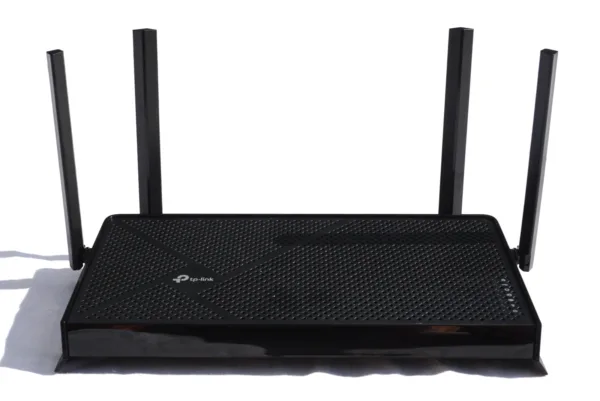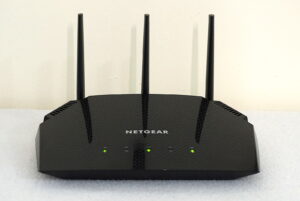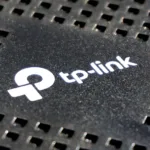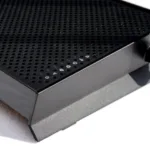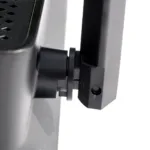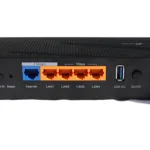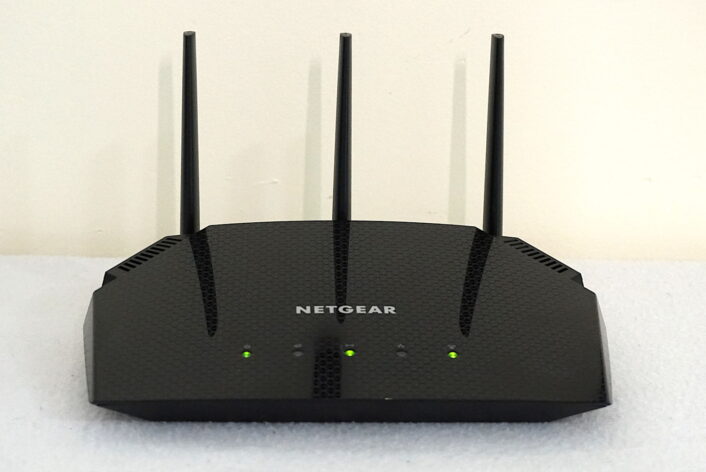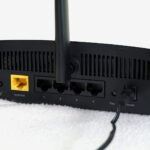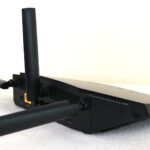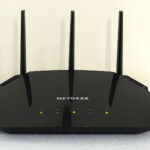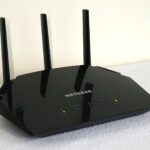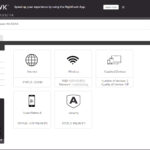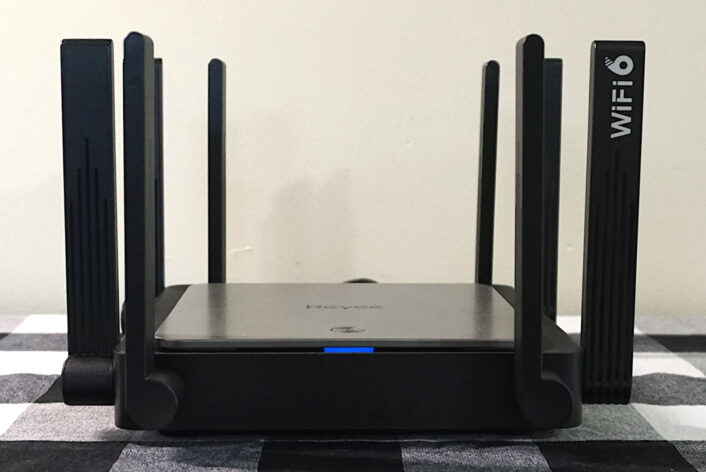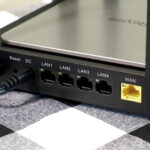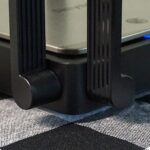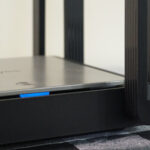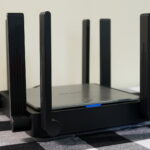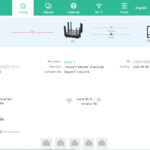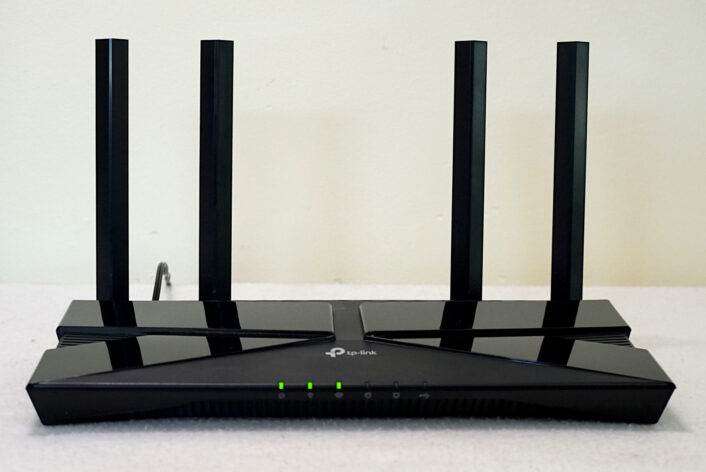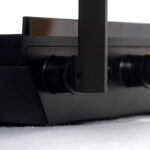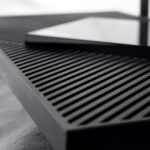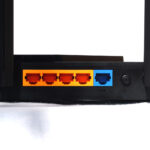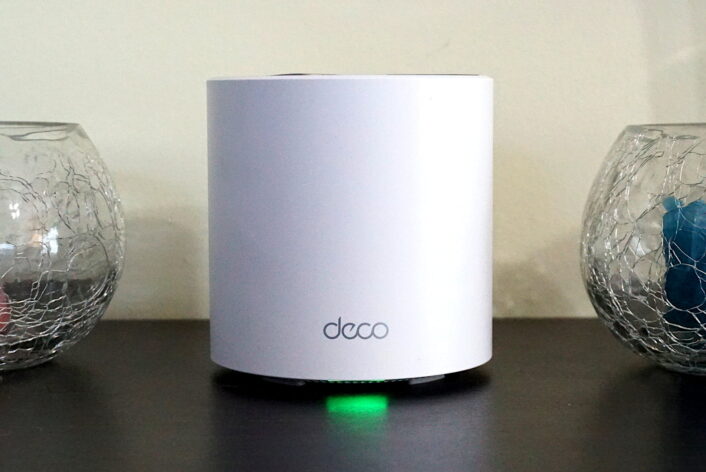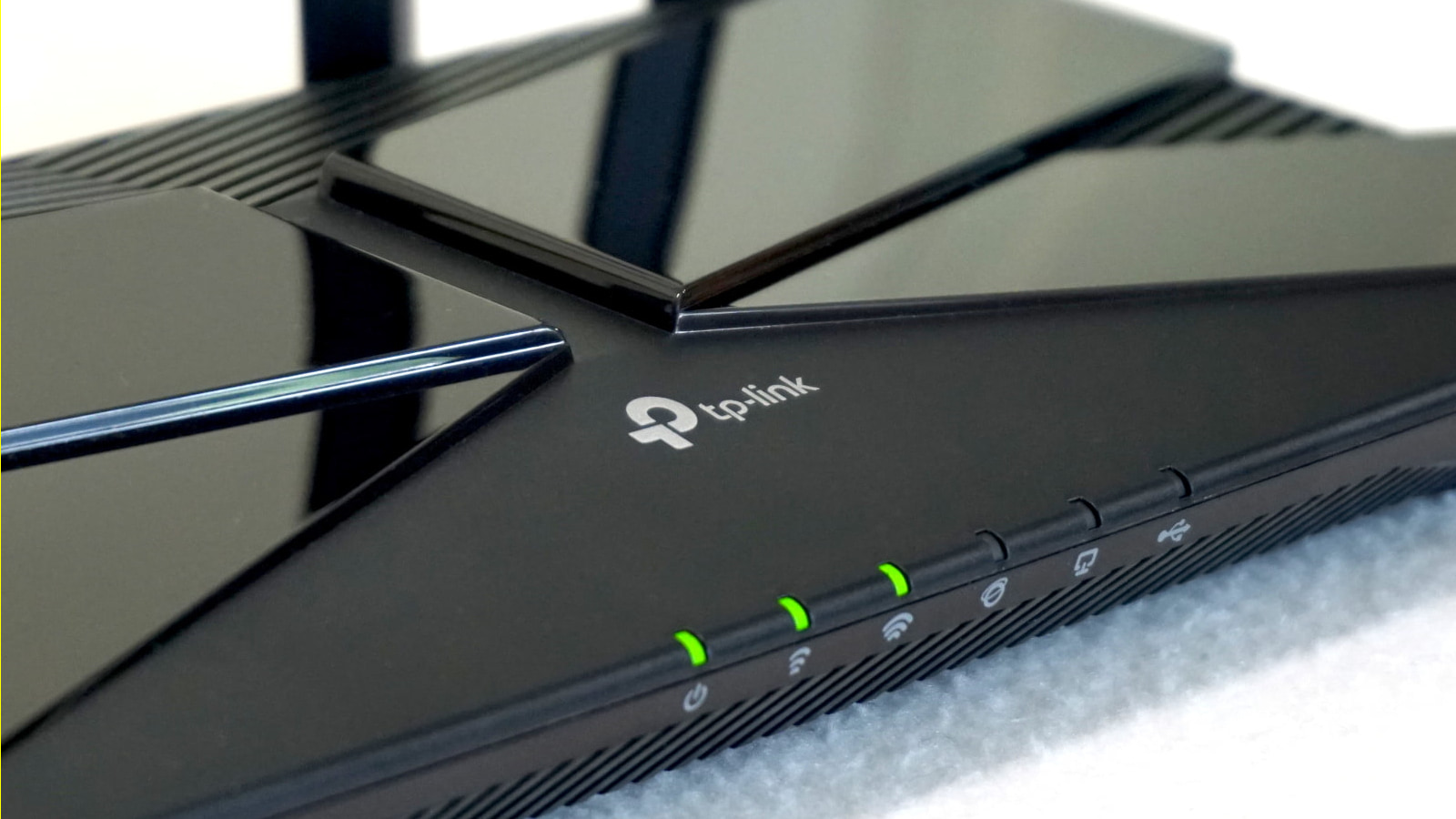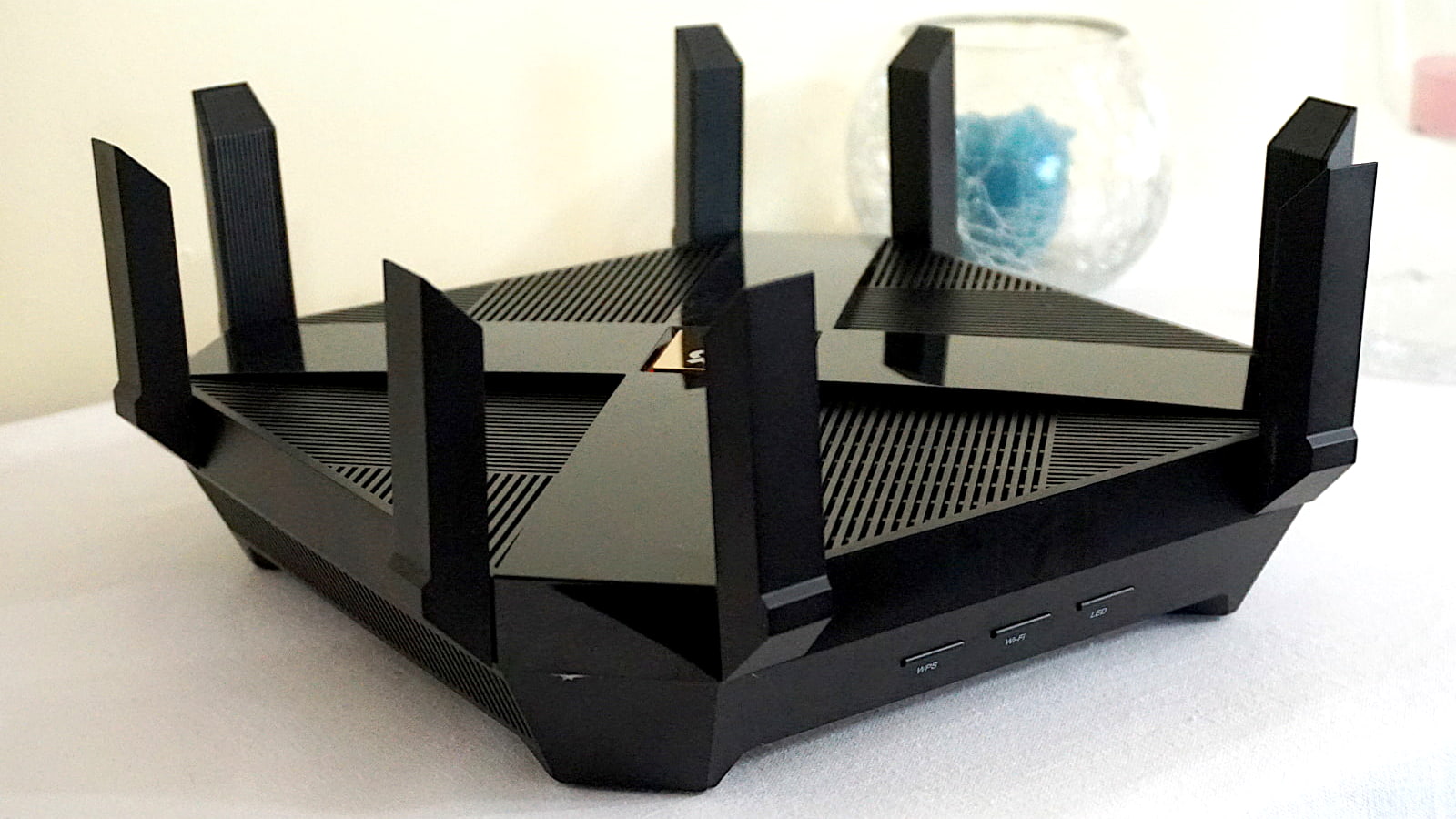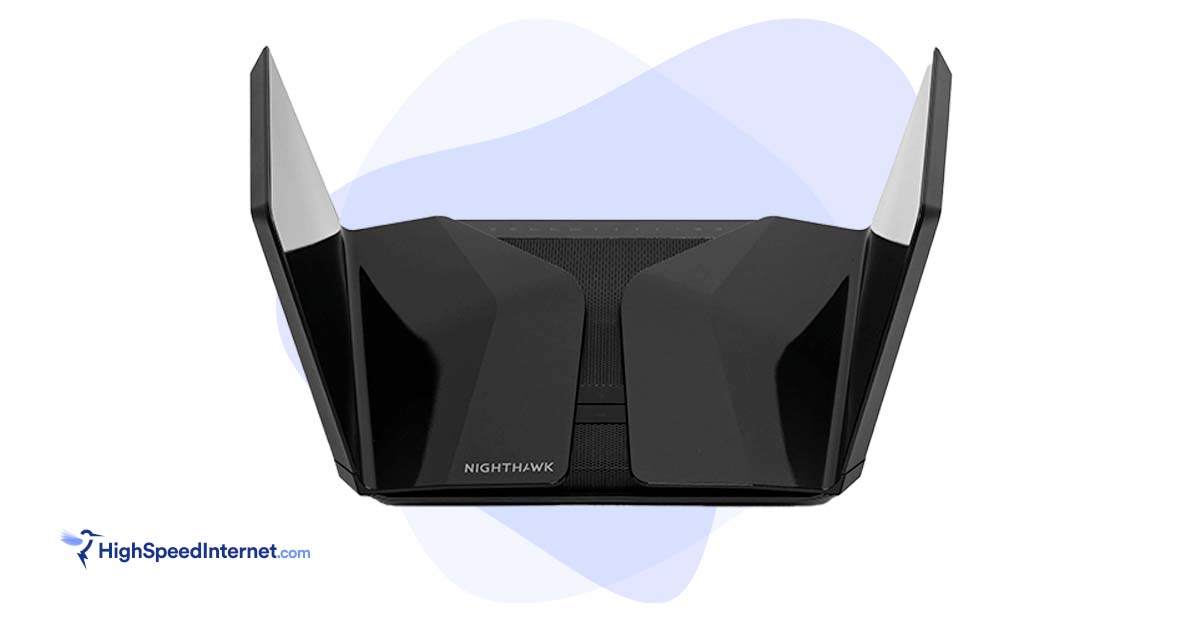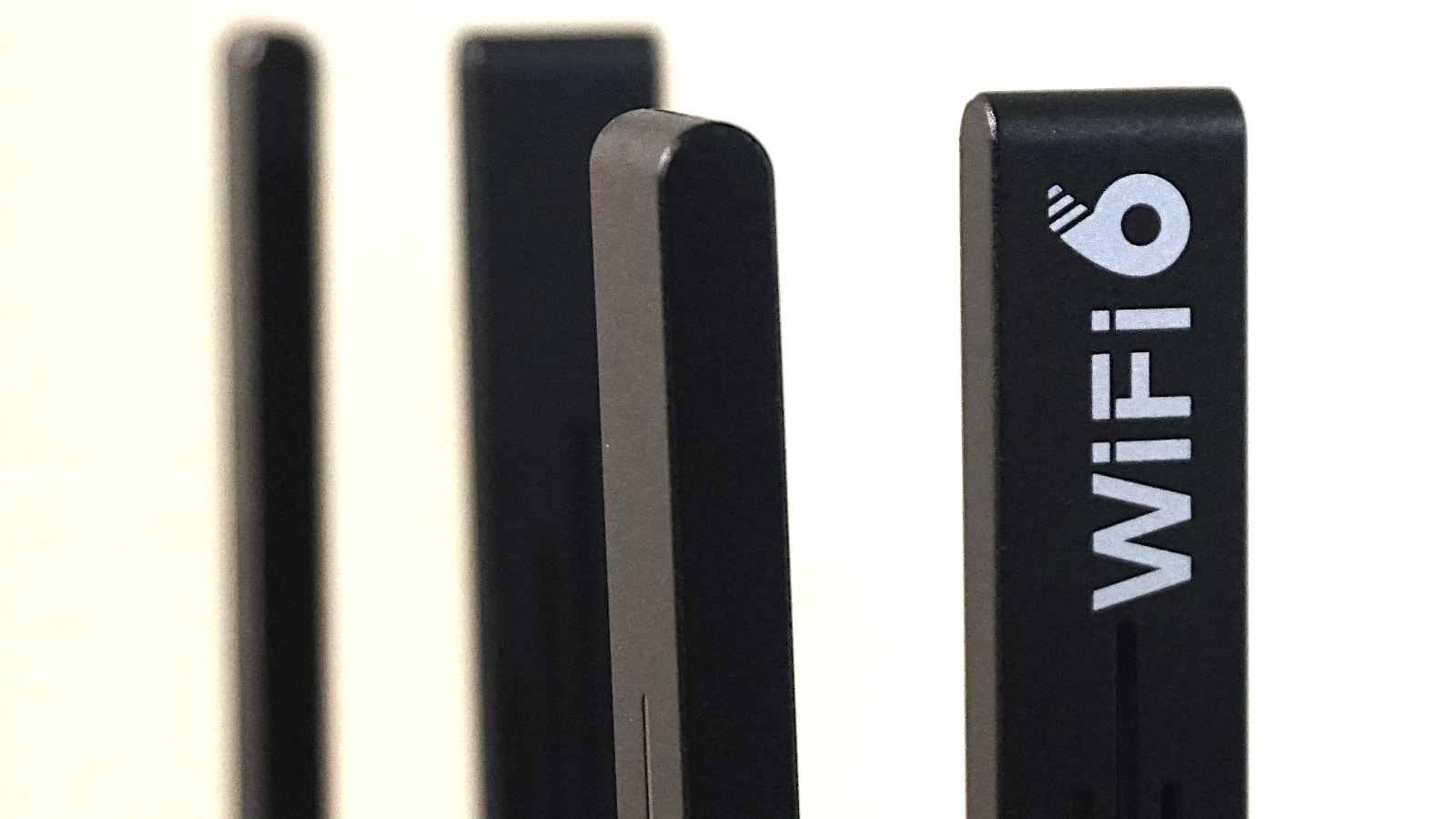Best Budget Routers for 2026
We tested a batch of budget-friendly routers to find the best bang for your buck
Dec 16, 2025 | Share
Best Routers
-
Best overallTP-Link Archer BE230
- $199.99*
- EasyMesh support
- Multiple SSIDs
- No 6GHz band
-
Best for gamersNETGEAR R6700AX
- $56.00*
- Good speeds for the price
- Built-in VPN client
- Subscription requirements
-
Best for long rangeReyee RG-E5
- $89.99*
- Great speeds at long range
- Free cloud management
- No built-in VPN tools
*Amazon.com prices (as of 12/16/2025 17:35 MST). Read full disclaimer.
† Price for one unit
Our top pick: Which budget router is best?
TP-Link’s Archer BE230 knocks it out of the park. It’s a Wi-Fi 7 router, sure, and you may not own Wi-Fi 7 devices just yet. But the way the BE230 handles interference and its excellent performance makes it a steal, even when using Wi-Fi 6E devices and older. Want a mesh network? The BE230 has your back with EasyMesh support.
How we test routers
We vigorously test routers to see how well they stack up against the competition in speed and range. We also evaluate the setup process and dig into the web and mobile apps to see if they’re easy or difficult to use. Check out our methodology page for more information.
In this roundup:
Best budget routers | What to look for | Best overall | Our verdict | Benchmarks | FAQ
In this roundup:
The 5 best budget routers
- Best overall: TP-Link Archer BE230
- Best for gamers: NETGEAR R6700AX
- Best for long range: Reyee RG-E5
- Best for under $100: TP-Link Archer AX21
- Best for mesh: TP-Link Deco X55
Compare budget router speeds and prices
| Best for | Model | Max throughput | Price* |
|---|---|---|---|
| Overall | TP-Link Archer BE230 | 3,600Mbps | $119.99 on Amazon |
| Gamers | NETGEAR R6700AX | 1,800Mbps | $56.00 on Amazon |
| Long range | Reyee RG-E5 | 3,200Mbps | $79.99 on Amazon |
| Under $100 | TP-Link Archer AX21 | 1,800Mbps | $54.99 on Amazon |
| Mesh | TP-Link Deco X55 | 3,000Mbps | $89.99† on Amazon |
* Amazon.com Prices (as of 12/16/2025 10:50 MST). Read full disclaimer.
† Price for one unit.
What should you look for in a budget router?
Don’t expect a lot of bang for your buck for under $150. Our normal recommendations for more expensive routers don’t apply here.
However, start with Wi-Fi 6. It’s the most common Wi-Fi specification as of 2025, offering better speed, range, and security than the previous versions. Keep an eye out for the WAN port speed, too, as it defines the maximum internet speed it supports.
Do you have an affordable plan to go with your budget router?
If not, be sure to enter your zip code below to see what options are available to you.
Best overall—TP-Link Archer BE230
|
Kevin Parrish | HighSpeedInternet.com |
|
A feature-packed router that doesn’t break the bank |
|
Score:4.5out of 5 |
There’s a lot packed into the Archer BE230 for the money. It’s definitely a good upgrade from Wi-Fi 6 if your devices can’t access the 6 GHz band. |
| Pros | Cons |
|
|
$119.99*
* Amazon.com Price (as of 12/16/2025 10:50 MST). Read full disclaimer.
Expand for product details and ratings
| Category | Score* | Summary |
| Performance | 5 | Provides excellent speeds for the money. |
| Features | 4 | Includes VPN tools and multiple networks. |
| Design | 4 | Packs multi-gig wired connections. |
| Setup | 4 | Gets you up and running quickly. |
| Ease of use | 4 | Presents a clean interface on desktop and mobile. |
* out of 5 points
What we like about it: The Archer BE230 has good speeds for the money based on tests. It’s loaded with features, too, like VPN tools and multiple Wi-Fi networks.
What we wish it did better: We’re not a big fan of subscriptions, especially when we know a manufacturer offers similar services for free.
Why do we recommend it? Get the Archer BE230 if you’re on a tight budget and not ready to use the 6 GHz band. The improved speeds and awesome callouts make this affordable router a real treat to have.
Tested speeds at a glance
| 5 GHz max speed | 2 feet | 40 feet | 120 feet |
| 2,882 | 2,026 | 1,327 | 630 |
* Speeds in megabits per second (Mbps) using a Wi-Fi 7 client and a 160 MHz channel. See our Benchmarks section for more speed results from our testing.
| Wi-Fi specs | Wired specs |
|
|
Best for gamers—NETGEAR R6700AX
|
Kevin Parrish | HighSpeedInternet.com |
|
A value-priced router for gamers on a budget |
|
Score:3.5out of 5 |
The NETGEAR R6700AX has good Wi-Fi 6 speeds at close range. It’s a steal if you need a low-cost router with a built-in VPN server and client. |
| Pros | Cons |
|
|
$56.00*
* Amazon.com Price (as of 12/16/2025 10:50 MST). Read full disclaimer.
Expand for product details and ratings
| Category | Score* | Summary |
| Performance | 4 | Performs better than the AX20 in our tests (but not by much). |
| Features | 3 | Includes a built-in VPN server and client, but that’s it. |
| Design | 3 | Lacks the USB port and extra streams found on other routers. |
| Setup | 3 | Has issues when setting up using the web interface. |
| Ease of use | 3 | Provides a clean but ugly web interface and a decent app. |
* out of 5 points
What we like about it: You can get decent speeds at 120 feet, but the tested average wasn’t that much faster than the Archer A10, a slower Wi-Fi 5 model. It has better speeds at close range, plus it includes a VPN server and client, the latter of which the Archer A10 does not.
What we wish it did better: We’re not keen on the required subscriptions, which you need for the parental controls and security features. This router could use a USB port too, so you can share files and stream media from a USB-connected storage device. Printer sharing would also be handy.
Why do we recommend it? Sure, the R6700AX doesn’t have any gaming tools like the more expensive Nighthawk routers, but it has a cheap price tag and good Wi-Fi 6 speeds at close range for the money. The VPN server and client are a bonus.
Tested speeds at a glance
| 5 GHz max speed | 2 feet | 40 feet | 120 feet |
| 1,200 | 837 | 434 | 203 |
* Speeds in megabits per second (Mbps) using a Wi-Fi 6 client and an 80 MHz channel. See our Benchmarks section for more speed results from our testing.
| Wi-Fi specs | Wired specs |
|
|
Best for long range—Reyee RG-E5
|
Kevin Parrish | HighSpeedInternet.com |
|
A business-class router you can use at home |
|
Score:3.8out of 5 |
The Reyee RG-E5 is a business-first router, but it’s also an affordable solution for homes. It has great speeds at long range plus free access to a cloud management platform. |
| Pros | Cons |
|
|
$99.99*
* Amazon.com Price (as of 6/24/25 10:50 MST). Read full disclaimer.
Expand for product details and ratings
| Category | Score* | Summary |
| Performance | 4 | Has the best long-range speeds for under $150. |
| Features | 3 | Provides an ARP Guard and free Ruijie Cloud account. |
| Design | 3 | Lacks USB ports, multi-gig internet support, and VPN tools. |
| Setup | 4 | Has one of the fastest setups we’ve tested to date. |
| Ease of use | 4 | Requires the web interface and mobile app to use fully. |
* out of 5 points
What we like about it: Of the routers on this list, the RG-E5 has the best speeds at long range. Moreover, it has amazing speed consistency, meaning you don’t see a dramatic speed dropoff as you move away from the router.
What we wish it did better: The RG-E5 is the only Wi-Fi 6 router we have in-house that doesn’t support the latest security standard, WPA3. Plus, it’s lacking in other areas like VPN and USB connectivity.
Why do we recommend it? The Reyee RG-E5 is a high-performance router you should get if you’re willing to spend $150. It lacks in some areas, sure, but if consistent speed is what you need across a long range, this is the router for you.
Tested speeds at a glance
| 5 GHz max speed | 2 feet | 40 feet | 120 feet |
| 1,200 | 843 | 636 | 330 |
* Speeds in megabits per second (Mbps) using a Wi-Fi 6 client and an 80 MHz channel. See our Benchmarks section for more speed results from our testing.
| Wi-Fi specs | Wired specs |
|
|
Best for under $100—TP-Link Archer AX21
|
Kevin Parrish | HighSpeedInternet.com |
|
Decent Wi-Fi speeds for a low price |
|
Score:3.6out of 5 |
This slight uptick from the older AX20 model has some bang for your buck, but you may be better off with the AX20 if you want extra features, like USB support. |
| Pros | Cons |
|
|
$79.99*
* Amazon.com Price (as of 12/16/2025 10:50 MST). Read full disclaimer.
Expand for product details and ratings
| Category | Score* | Summary |
| Performance | 4 | Matches the speeds of similar budget routers. |
| Features | 3 | Lacks some notable features offered on the AX20 model. |
| Design | 3 | Has more channels than the AX20 but lacks the USB port. |
| Setup | 3 | Needs to be more streamlined for a faster process. |
| Ease of use | 4 | Provides a great interface for easy network management. |
* out of 5 points
What we like about it: The Archer AX21 has good speeds for the money based on our tests, even at 120 feet. It has a few extra features, too, like EasyMesh support and a built-in VPN server.
What we wish it did better: The Archer AX21 needs a USB port for file sharing, Apple Time Machine backups, and local media streaming.
Why do we recommend it? The Archer AX21 has a great price for the speeds you get. You can extend your Wi-Fi coverage through EasyMesh and OneMesh products and surf the internet anonymously from anywhere using the built-in VPN server.
Tested speeds at a glance
| 5 GHz max speed | 2 feet | 40 feet | 120 feet |
| 1,200 | 824 | 428 | 223 |
* Speeds in megabits per second (Mbps) using a Wi-Fi 6 client and an 80 MHz channel. See our Benchmarks section for more speed results from our testing.
| Wi-Fi specs | Wired specs |
|
|
Best for mesh—TP-Link Deco X55
|
Kevin Parrish | HighSpeedInternet.com |
|
An affordable mesh system you can build over time |
|
Score:3.8out of 5 |
The Deco X55 is a great value if you’re looking for an inexpensive whole-home Wi-Fi solution. It’s cheaper than many competing systems with the same speeds, but expect to pay extra for everything it has to offer. |
| Pros | Cons |
|
|
$89.99*†
* Amazon.com Price (as of 12/16/2025 10:50 MST). Read full disclaimer.
† Price for one unit.
Expand for product details and ratings
| Category | Score* | Summary |
| Performance | 4 | Performs slower than the Amazon Eero Pro 6 in our tests, but costs far less. |
| Features | 3 | Locks some parental and security controls behind a paywall. |
| Design | 4 | Includes three Ethernet ports, one of which you can use for fast Deco-to-Deco communication. |
| Setup | 3 | Requires a TP-Link ID cloud account to install and use. |
| Ease of use | 4 | Presents a great network management experience in the most recent Deco app. |
* out of 5 points
What we like about it: The Deco X55 is a good megabits-per-dollar value. The tested speeds weren’t bad, and you can get better speeds from each Deco unit by wiring them together with Ethernet. You get some free parental controls, too, which is nice if you have kids.
What we wish it did better: The Deco X55 supports 160 MHz channels, but it doesn’t have a 2.5Gbps WAN port to support those speeds. Plus, it doesn’t have a third Wi-Fi band dedicated router-to-satellite communication, so your speeds will be slower compared to competing systems that do—unless you use Ethernet.
Why do we recommend it? The Deco X55 is a decent kit for the money. You can’t expect tons of speed from this system, but there should be plenty for a few devices connecting simultaneously. The extra Ethernet ports come in handy, especially if you want better speeds throughout your home.
Tested speeds at a glance
| 5 GHz max speed | 2 feet | 40 feet | 120 feet |
| 1,200 | 739 | 339 | Not tested |
* Speeds in megabits per second (Mbps) using a Wi-Fi 6 client and an 80 MHz channel. See our Benchmarks section for more speed results from our testing.
| Wi-Fi specs | Wired specs |
|
|
Our verdict
TP-Link’s Archer BE230 was a pleasant surprise. We expected the usual “you get what you pay for” speeds when we tested this router, but it made us eat those words. It offers stellar performance backed by a nice feature set for under a hundred bucks. Sure, it’s Wi-Fi 7, but you’ll see the best speeds on Wi-Fi 6E and older devices out of all the routers we list here. The other choices here are decent, too, if the Archer BE230 is unavailable.
Our router benchmarks
Here are the average speeds recorded for each router. Wi-Fi speeds fluctuate significantly, so these numbers reflect at least three tests taken at each 10-foot interval. You can see the specifications of the client devices we use for testing on our Methodology page.
TP-Link Archer BE230
| OnePlus 11 5G | Google Pixel 6 | |
|---|---|---|
| 2 feet | 2,026 | 1,905 |
| 10 feet | 1,897 | 1,832 |
| 20 feet | 1,701 | 1,680 |
| 30 feet | 1,505 | 1,501 |
| 40 feet (porch) | 1,327 | 1,296 |
| 120 feet (across street) | 630 | 612 |
| 2 feet | |
| OnePlus 11 5G | 2,026 |
| Google Pixel 6 | 1,905 |
| 10 feet | |
| OnePlus 11 5G | 1,897 |
| Google Pixel 6 | 1,832 |
| 20 feet | |
| OnePlus 11 5G | 1,701 |
| Google Pixel 6 | 1,680 |
| 30 feet | |
| OnePlus 11 5G | 1,505 |
| Google Pixel 6 | 1,501 |
| 40 feet (porch) | |
| OnePlus 11 5G | 1,327 |
| Google Pixel 6 | 1,296 |
| 120 feet (across street) | |
| OnePlus 11 5G | 630 |
| Google Pixel 6 | 612 |
* Speeds in megabits per second (Mbps) using an 160 MHz channel.
The table above shows our tests on the BE230 using client devices that support a 160MHz channel. We generally don’t see exceptional numbers using such a wide channel on the 5 GHz band due to radar plaguing the area, but Wi-Fi 7’s ability to reduce interference helps us regain speed we lose on Wi-Fi 6E and older routers.
To be fair to the other routers in our roundup, here are the same client devices using a narrower 80 MHz channel. Take a look:
| OnePlus 11 5G | Google Pixel 6 | |
|---|---|---|
| 2 feet | 1,069 | 1,024 |
| 10 feet | 965 | 957 |
| 20 feet | 853 | 843 |
| 30 feet | 783 | 745 |
| 40 feet (porch) | 653 | 620 |
| 120 feet (across street) | 347 | 326 |
| 2 feet | |
| OnePlus 11 5G | 1,069 |
| Google Pixel 6 | 1,024 |
| 10 feet | |
| OnePlus 11 5G | 965 |
| Google Pixel 6 | 957 |
| 20 feet | |
| OnePlus 11 5G | 853 |
| Google Pixel 6 | 843 |
| 30 feet | |
| OnePlus 11 5G | 783 |
| Google Pixel 6 | 745 |
| 40 feet (porch) | |
| OnePlus 11 5G | 653 |
| Google Pixel 6 | 620 |
| 120 feet (across street) | |
| OnePlus 11 5G | 347 |
| Google Pixel 6 | 326 |
* Speeds in megabits per second (Mbps) using an 80 MHz bonded channel.
NETGEAR R6700AX
| iPhone 12 Pro Max | Google Pixel 3 | |
|---|---|---|
| 2 feet | 837 | 689 |
| 10 feet | 747 | 605 |
| 20 feet | 678 | 502 |
| 30 feet | 560 | 369 |
| 40 feet (porch) | 434 | 234 |
| 120 feet (across street) | 203 | 91 |
| 2 feet | |
| iPhone 12 Pro Max | 837 |
| Google Pixel 3 | 689 |
| 10 feet | |
| iPhone 12 Pro Max | 747 |
| Google Pixel 3 | 605 |
| 20 feet | |
| iPhone 12 Pro Max | 678 |
| Google Pixel 3 | 502 |
| 30 feet | |
| iPhone 12 Pro Max | 560 |
| Google Pixel 3 | 369 |
| 40 feet (porch) | |
| iPhone 12 Pro Max | 434 |
| Google Pixel 3 | 234 |
| 120 feet (across street) | |
| iPhone 12 Pro Max | 203 |
| Google Pixel 3 | 91 |
* Speeds in megabits per second (Mbps) using an 80 MHz channel.
Reyee RG-E5
| iPhone 12 Pro Max | Google Pixel 3 | |
|---|---|---|
| 2 feet | 843 | 695 |
| 10 feet | 842 | 692 |
| 20 feet | 789 | 656 |
| 30 feet | 725 | 646 |
| 40 feet (porch) | 636 | 445 |
| 120 feet (across street) | 330 | 143 |
| 2 feet | |
| iPhone 12 Pro Max | 843 |
| Google Pixel 3 | 695 |
| 10 feet | |
| iPhone 12 Pro Max | 842 |
| Google Pixel 3 | 692 |
| 20 feet | |
| iPhone 12 Pro Max | 789 |
| Google Pixel 3 | 656 |
| 30 feet | |
| iPhone 12 Pro Max | 725 |
| Google Pixel 3 | 646 |
| 40 feet (porch) | |
| iPhone 12 Pro Max | 636 |
| Google Pixel 3 | 445 |
| 120 feet (across street) | |
| iPhone 12 Pro Max | 330 |
| Google Pixel 3 | 143 |
* Speeds in megabits per second (Mbps) using an 80 MHz channel.
TP-Link Archer AX21
| iPhone 12 Pro Max | Google Pixel 3 | |
|---|---|---|
| 2 feet | 824 | 666 |
| 10 feet | 798 | 608 |
| 20 feet | 745 | 514 |
| 30 feet | 685 | 495 |
| 40 feet (porch) | 428 | 356 |
| 120 feet (across street) | 223 | 101 |
| 2 feet | |
| iPhone 12 Pro Max | 824 |
| Google Pixel 3 | 666 |
| 10 feet | |
| iPhone 12 Pro Max | 798 |
| Google Pixel 3 | 608 |
| 20 feet | |
| iPhone 12 Pro Max | 745 |
| Google Pixel 3 | 514 |
| 30 feet | |
| iPhone 12 Pro Max | 685 |
| Google Pixel 3 | 495 |
| 40 feet (porch) | |
| iPhone 12 Pro Max | 428 |
| Google Pixel 3 | 356 |
| 120 feet (across street) | |
| iPhone 12 Pro Max | 223 |
| Google Pixel 3 | 101 |
* Speeds in megabits per second (Mbps) using an 80 MHz channel.
TP-Link Deco X55
| iPhone 12 Pro Max | Google Pixel 3 | |
|---|---|---|
| 2 feet | 739 | 611 |
| 10 feet | 680 | 573 |
| 20 feet | 613 | 509 |
| 30 feet | 565 | 443 |
| 40 feet (porch) | 339 | 262 |
| 120 feet (across street) | Not tested | Not tested |
| 20 feet (dining room) | 373 | 396 |
| 2 feet | |
| iPhone 12 Pro Max | 739 |
| Google Pixel 3 | 611 |
| 10 feet | |
| iPhone 12 Pro Max | 680 |
| Google Pixel 3 | 573 |
| 20 feet | |
| iPhone 12 Pro Max | 613 |
| Google Pixel 3 | 509 |
| 30 feet | |
| iPhone 12 Pro Max | 565 |
| Google Pixel 3 | 443 |
| 40 feet (porch) | |
| iPhone 12 Pro Max | 339 |
| Google Pixel 3 | 262 |
| 120 feet (across street) | |
| iPhone 12 Pro Max | Not tested |
| Google Pixel 3 | Not tested |
| 20 feet (dining room) | |
| iPhone 12 Pro Max | 373 |
| Google Pixel 3 | 396 |
* Speeds in megabits per second (Mbps) using an 80 MHz channel.
FAQ about budget routers
What subscriptions do you need for the R6700AX?
What does NETGEAR Armor Powered by Bitdefender include?
What do NETGEAR Smart Parental Controls include?
Why do more streams matter?
Why are VPN tools important?
Amazon disclaimer
Amazon.com Prices as of 12/16/2025 9:35 MST. Product prices and availability are accurate as of the date/time indicated and are subject to change. Any price and availability information displayed on Amazon.com at the time of purchase will apply to the purchase of this product. Highspeedinternet.com utilizes paid Amazon links.
CERTAIN CONTENT THAT APPEARS ON THIS SITE COMES FROM AMAZON. THIS CONTENT IS PROVIDED ‘AS IS’ AND IS SUBJECT TO CHANGE OR REMOVAL AT ANY TIME.
Author - Kevin Parrish
Kevin Parrish has more than a decade of experience working as a writer, editor, and product tester. He began writing about computer hardware and soon branched out to other devices and services such as networking equipment, phones and tablets, game consoles, and other internet-connected devices. His work has appeared in Tom’s Hardware, Tom's Guide, Maximum PC, Digital Trends, Android Authority, How-To Geek, Lifewire, and others. At HighSpeedInternet.com, he focuses on network equipment testing and review.
Editor - Rebecca Lee Armstrong
Rebecca Lee Armstrong has more than six years of experience writing about tech and the internet, with a specialty in hands-on testing. She started writing tech product and service reviews while finishing her BFA in creative writing at the University of Evansville and has found her niche writing about home networking, routers, and internet access at HighSpeedInternet.com. Her work has also been featured on Top Ten Reviews, MacSources, Windows Central, Android Central, Best Company, TechnoFAQ, and iMore.
